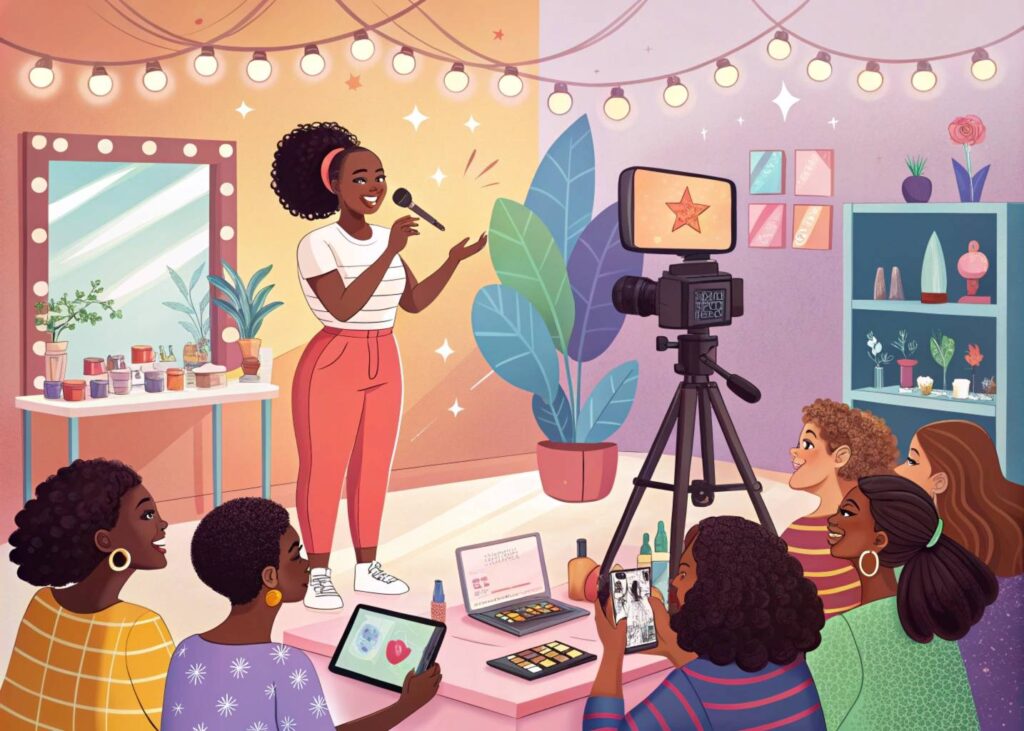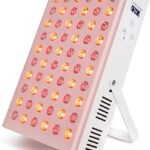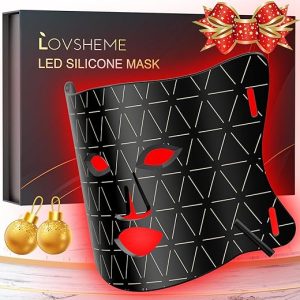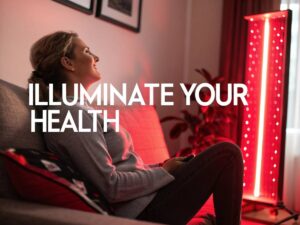In the vibrant tapestry of the beauty industry, Black beauty brands stand as bold strokes of culture and identity.
From the pioneering days of Fashion Fair to the groundbreaking launches of Pat McGrath Labs and Fenty Beauty, these brands have not only redefined beauty standards but also championed inclusivity and diversity.
Imagine walking through a beauty aisle where every shade and product celebrates Black excellence—this is the legacy and ongoing revolution led by Black beauty icons.
Dive into the transformative journey of these brands and discover how they’re reshaping the beauty landscape for generations to come.
Black Beauty Brands Evolution
The march of Black beauty brands isn’t just a tale of business but of culture and identity. It’s like watching a colorful canvas come to life, where each brand adds its unique shade. Let’s chat about three remarkable brands: Fashion Fair, Pat McGrath Labs, and Fenty Beauty.
Fashion Fair: The Trailblazer
Back in 1973, when beauty aisles seemed like a no-entry zone for Black women, Fashion Fair burst onto the scene. Born out of a need that nobody else bothered with, this brand brought colors and shades for dark skin tones, serving as a lifeline in an often unforgiving industry. It wasn’t just about makeup; it was a statement that Black beauty was here to stay and be seen in its full glory.
| Year | Event |
|---|---|
| 1973 | Fashion Fair opens shop with foundations for darker skin |
| 1990s | Growth of ‘ethnic aisles’ in American drugstores |
| 2000s | The ongoing challenge for luxury tailored products for Black women |
This brand was a stepping stone, nudging the beauty industry to finally take a long, hard look at black beauty standards.
Pat McGrath Labs: A Splash of Freshness

Enter Pat McGrath Labs, founded by the legendary British make-up artist Pat McGrath. This brand was the hot topic of the Noughties, sprinkled with sleek design and shades that shouted inclusivity. Here was glamour entwined with bold experiments, giving Black women products that didn’t just look pretty but worked wonders.
| Feature | Details |
|---|---|
| Founder | Pat McGrath |
| Launch Period | Noughties |
| Highlights | Sleek style, inclusive hues, glitz & inventive looks |
Pat’s brand is like a fairy godmother of modern black beauty products, mentoring new beauty narratives.
Fenty Beauty: Shaking Up the Scene
When Rihanna dropped Fenty Beauty in 2017, it was like throwing a party where everyone was invited. With 40 shades of foundation to boot, it was a giant wake-up call to brands stuck in the “one bottle fits all” mentality. It challenged norms and made shade inclusivity the new “it” thing (Harper’s Bazaar).
| Feature | Details |
|---|---|
| Founder | Rihanna |
| Kick-Off Year | 2017 |
| Foundation Shades | 40 |
| Impact | Redefined diversity in makeup |
Fenty sparked a movement—a beauty renaissance—carving paths for other brands to follow. Check out our reads on black beauty influencers and black beauty bloggers to see the waves it’s made.
These brands didn’t just fill shelves; they reshaped minds. They championed inclusivity and diversity, setting new norms and enriching the Black beauty saga.
Challenges for Black Beauty Founders
Starting a beauty brand’s gotta be tough, right? Imagine being a Black entrepreneur in the mix—it’s a whole different ball game. Even with everyone finally starting to recognize the power of the black beauty industry, it’s not all roses. From hashing out funding to dealing with biases in venture capital, there are some pretty hefty hurdles to leap.
Access to Funding
So, let’s talk cash. Money is often the biggest roadblock for Black beauty founders. According to Harper’s Bazaar, Black-owned businesses face rejection for loans way more than their white counterparts. The struggle for funds is so real that it sparked the #pullupchallenge—all about teaming up to shout out inclusivity and support, UK style.
Yet, despite the rally cries, a colossal funding chasm persists in the beauty world. See the cold, hard facts below showing the struggle for loan approvals:
| Business Owner Demographics | Loan Approval Rate (%) |
|---|---|
| White Business Owners | 60 |
| Black Business Owners | 30 |
Struggles as Entrepreneurs
And it doesn’t stop with funding. Black beauty founders often find themselves jumping through hoops to meet investor criteria, feeling a bit solo, and trying to snag the growth support needed to keep moving forward. Then there’s the extra punch of limited shelf space—imagine trying to shout out your brand with just a whisper of exposure.
But hey, resilience? It’s practically their superpower. Black-owned beauty brands are hustling hard and making waves, slapping down that median income of Black venture capital-funded brands as a badge of honor, showcasing incredible gains.
Venture Capital Biases
Now, on to venture capital—where trying to snag investments feels like pulling teeth. This isn’t just in our heads; it’s a cemented bias vibe in the industry, making it an uphill climb for Black-owned brands. Black consumers drop a serious chunk of change, yet Black brands pocket a minuscule slice of the beauty pie (McKinsey).
Take a look at the numbers—that gap is undeniable:
| Metric | Value (%) |
|---|---|
| Black Consumer Spending | 11.1 |
| Black Representation in US Population | 12.4 |
| Black Brand Revenue Contribution | 2.4 |
Closing that gap calls for knocking down venture capital biases and ramping up support for Black entrepreneurs. Contributing to this are the representation and funding chasms widening the gap for Black beauty founders. Cranking up the support and shaking up brand strategies can help carve out a wider path for Black beauty in the industry.
For the nitty-gritty on representation hurdles in beauty, swing by our representation challenges section.
Black Beauty Market Insights
Market Size and Growth Forecast
Grab a coffee and perk up, because the black beauty biz is booming! In 2023, this industry’s value hit USD 8.24 billion. By 2031? They say we’ll be talkin’ USD 21.71 billion! That’s like riding a rollercoaster with a Compound Annual Growth Rate (CAGR) of 13.1% from 2024 to 2031. Can you feel the thrill, courtesy of InsightAce Analytic?
| Year | Market Size (USD Billion) |
|---|---|
| 2023 | 8.24 |
| 2024 | 9.32 |
| 2025 | 10.54 |
| 2026 | 11.91 |
| 2027 | 13.45 |
| 2028 | 15.20 |
| 2029 | 17.18 |
| 2030 | 19.44 |
| 2031 | 21.71 |
Key Factors Driving Demand
So, what’s making folks fill their carts with black beauty treasures? Here’s the scoop:
- Packaging Appeal: Ever bought something just because it looked too good to leave? Brands are making sure their packaging wows black consumers.
- Beneficial Ingredients: It’s all about what’s good for your hair and skin. Gone are the days of settling for less; now it’s ingredients that you can brag about.
- Social Media Marketing: Scroll, like, click, and bam! Social media, with the power of Instagram and YouTube, is where black beauty influencers shine bright like a diamond.
- Consumer Awareness: Knowing what’s in your jar or bottle is like knowing what’s in your smoothie. Folks are getting smarter about fighting off pollution and aging.
- Personal Expression: It’s about rocking that personal style and staying fresh. People are investing in products that speak their unique language.
Regional Market Analysis
Let’s travel the world and see where black beauty is basking in the spotlight:
| Region | Market Features |
|---|---|
| North America | Leads the pack with folks investing in keeping it sharp and stylish. |
| Europe | Slow and steady, with a rainbow of product choices. |
| Africa | A sleeping giant just waiting to wake up. |
| Asia-Pacific | Catching on to black beauty with more places to shop. |
Want more tea on global trends? Peek at our reads on black beauty standards and black beauty products.
Now, let’s talk body spray – a favorite for leaving an impression. Energizing fruity or floral scents, chic packaging, and long-lasting formulas make this segment a standout. Curious how influencers sway these vibes? Our take on black beauty bloggers has you covered.
Influence of Black YouTube Creators

In a world where videos shape trends like new sneakers shape kids’ playground moves, Black YouTube creators are the rockstars of the beauty scene. Their videos don’t just spark makeup trends; they’ve flipped the script on what beauty looks like, making it way more colorful and inclusive.
Role in Beauty Industry
You don’t have to squeeze through Sephora’s doors to realize that Black YouTube influencers are bigshots in beauty! They don’t just toss out makeup tips; they’re out here teaching us how to blend like Bob Ross on a canvas. These creators are the bridge between what the beauty industry sells and what the community needs.
With tutorials and reviews that pack a punch, they drive sales like nobody’s business. The beauty biz pockets major dollars from influencer marketing, especially in the Fashion & Beauty segment. By peeling back the layers of mainstream makeup myths, they showcase products that finally get the “Black girl magic” right.
Impact on Consumer Behavior
Turns out, these creators are like the pied pipers of beauty—they’ve got people following their #nofilter advice to try products that actually match diverse skins and styles.
Their viewers are not just watching; they’re browsing, buying, and buzzing about new brands, driven by influencers whose recommendations are as genuine as a grandma’s pie recipe. This stampede towards products that celebrate diversity is shaking up beauty aisles everywhere.
Notable Black Influencers
It’s time for some shout-outs to the legends who’re redefining representation in beauty like it’s an episode of “America’s Next Top Model” and they’re Tyra behind the camera:
- Jackie Aina: If beauty was a kingdom, she’d be the queen with 3.5 million loyal subjects (aka subscribers). Jackie’s not just serving looks; she’s serving change, pushing for more shades and better representation in brands like Anastasia Beverly Hills and Sephora. She deserves a seat in the beauty hall of fame!
| Influencer | Subscribers (M) | Notable Collaboration |
|---|---|---|
| Jackie Aina | 3.5 | Anastasia Beverly Hills, Sephora |
- Sweet Potato Soul: Besides topping the charts with 723K followers, she’s your go-to for tasty vegan dishes and eco-friendly chic. Featured on The Today Show and InStyle, it’s clear her influence spreads wider than organic ketchup on fries.
| Influencer | Subscribers (K) | Focus |
|---|---|---|
| Sweet Potato Soul | 723 | Vegan recipes, Ethical fashion |
- The Black Hokage: While beauty’s his side hustle, gaming is his main gig. With friends like DomSoExtra and Shofu, this dude’s redefining what it means to be a player in the gaming realm.
| Influencer | Content Focus |
|---|---|
| The Black Hokage | Gaming |
Really, these creators are mixing it up—like DJs at a block party—changing everything from beauty rules to lifestyle goals. Curious cats can pounce on more about their game-changing power at black beauty influencers and see how they’re not just changing the game; they’re rewriting the rules.
Historic Beauty Standards
Ancient Cultures
Back in the day, societies had their own takes on what it meant to be beautiful. Take ancient Greece, for example. Being curvaceous with wide hips and small bosoms was all the rage – think fertility goddess vibes.
Women would slap on makeup with toxic white lead and bleach their hair with vinegar, which, unsurprisingly, led to hair loss. Discover the effect of these ancient customs on black beauty standards.
Renaissance Period
Swing into the Renaissance and style took a sharp turn. Ladies wanted larger foreheads, so they yanked back their hairlines and thinned their brows just to get that high-brow look (literally). Having a pear-shaped figure was a must, flaunting those curvy hips and juicy thighs.
Corsets were all the rage for squishing waists into an hourglass shape. Dive into how Renaissance beauty still ripples through the black beauty scene today.
Georgian Era
Fast forward to the Georgian days (around 1790), and beauty was all about balance. Queen Louise of Prussia was the poster girl for this look – long neck, big bust, cinched waist, ticking every box for symmetry. The ideal woman wasn’t too tall or too short, just right in the middle. Get the lowdown on how these ideals still echo in our section on historic black beauty standards.
Take a quick peek at beauty through the ages:
| Era | Beauty Must-Haves |
|---|---|
| Ancient Greece | Curvy with wide hips and small busts; wore toxic lead makeup; bleached hair with vinegar (Nena Sterner Photography) |
| Renaissance | Big foreheads, pear-shaped bodies, loved a tight corset (Nena Sterner Photography) |
| Georgian Era | Proportionate figure, long neck, ample bust, and cinched waist |
For more in-depth takes on these old-school beauty rules and their ongoing influence, check out articles by black beauty bloggers, showing how yesterday’s trends shape today’s beauty buzz.
Modern Beauty Industry Vibes
Representation Struggles
Let’s face it: the beauty world hasn’t been the best ally to Black folks, either on store shelves or in the board meeting. It’s wild that Black consumers make up a good chunk, 11.1% of the US beauty spending pie, yet Black-owned brands barely scrape together 2.5% of the profits. There’s a Grand Canyon-sized gap when it comes to the visibility and availability of products for Black beauty fans.
Black folks often feel left out in the cold when cruising the aisles for hair and skin goodies tailored just for them. They’re three times more likely to hit the “not impressed” button when it comes to what’s out there for hair, skin, and makeup compared to their White counterparts (Lebube). There’s no denying it: better representation is not just a perk—it’s a must.
| Statistic | Percentage |
|---|---|
| Black Beauty Spending | 11.1% |
| Revenue Snagged by Black Brands | 2.5% |
| Cranky Customer Rate | 3x higher |
Source: McKinsey, Lebube
Money Matters
Cash troubles make it even tougher for Black beauty business rockstars. The cash flow in the US beauty scene has taken a nosedive, plummeting from $1.49 billion in 2021 to a measly $290 million by 2024. Black beauty brands are stuck in the slow lane, struggling to bag venture capital (VC) cash, which is the fuel they need for bigger dreams.
Out of 213 beauty businesses backed by VC cash, a mere 16 are Black-founded. That’s like taking a magnifying glass to the bias in funding land, with Black-led start-ups getting only about 9% of the early dosh and just 4% of the later-stage VC support. Such a cash crisis nips their competitive vibe in the bud.
| Money Stat | Percentage |
|---|---|
| Early VC Cash | 9% game |
| Later VC Cash | 4% game |
| US Beauty Cash Shrinkage | from $1.49B to $290M |
Source: McKinsey, Vogue Business
Winning Black-Owned Brands
Amidst it all, a number of Black-owned beauty brainchildren have not just survived but thrived, smashing barriers in the process. Shout out to Fenty Beauty by Rihanna for flipping the script with a zillion shade options for varied skin tones. Not to forget Pat McGrath Labs and Fashion Fair, which have set new bars for inclusivity and fab product lines.
These trailblazers have shown everyone what’s possible when Black beauty entrepreneurs are given a fair shot. Their success stories are proof that, with the right backing, there’s serious room to grow and shine.
If you want to pick up more cool stories about Black beauty scene makers, hop over to our page on black beauty influencers. Also, take a journey through the evolution of Black beauty norms over on our black beauty standards page.
To steer beauty into a future that everyone can vibe with, we need to tackle these representation and money blockades head-on. Uplifting Black-owned stars and championing brand diversity isn’t just a smart move—it’s the kind of change the beauty space desperately needs.
Bridging the Gap in Beauty Industry
Addressing Underrepresentation
The beauty aisle isn’t always as diverse as it ought to be. Black folks are shelling out big bucks for beauty products, yet Black-owned beauty brands are grabbing just a sliver of the pie. Can you believe Black consumers make up 11.1% of the spending, but these brands only scoop up 2.4% of the dough?
Talk about a head-scratcher! The shelves need more color—not just in product shades, but in brand representation too. And what better way than giving Black-owned brands the spotlight they deserve right in the stores and giving them a shoutout online and in the media.
Efforts to flip the script include retailers putting these brands out front and center while media campaigns sing their praises. Plus, celebrating the rich tapestry of black beauty standards can propel these brands to the beauty industry’s center stage.
Supporting Black Entrepreneurs
Let’s chat about cash, or the lack of it for Black beauty entrepreneurs. Securing that venture capital is like running an obstacle course, with hurdles built on biases. Yet, when they do catch that break, watch out! The income of VC-funded Black brands today is jaw-droppingly higher—89 times over what non-Black brands clocked in the same boat.
Black ventures might be trekking uphill with less funding at the start, but they’re outstripping others in success rates over time. Check this out:
| Brand Type | Median Income (VC-Funded) | Early Stage Funding Gap | Later Stage Funding Gap |
|---|---|---|---|
| Black-Owned Beauty Brands | 89x higher | 64% less | 85% less |
| Non-Black Beauty Brands | – | – | – |
Innovation and mentorship could become a magic wand for these brands. Shine a light on those making waves, and foster a supportive community where Black entrepreneurs in beauty can swap stories and ideas.
Diverse Brand Strategies
For Black-owned beauty brands to keep thriving, they’ve got to shake things up. Now it’s not just about serving their community but also welcoming everyone to the party. Black beauty influencers and bloggers hold megaphones that can get these brands heard far and wide.
Here are some ideas worth their weight in gold:
- Cultural Stories: Marketing and products should echo back the diverse heritages they stem from.
- Innovative Formulas: Design products that know a thing or two about different hair and skin types, addressing what mainstream often skips.
- Community Bonding: Forge strong ties with local communities through events, partnerships, and giving-back programs.
These strategies pave the way for Black-owned beauty brands to make waves and fill gaps in representation. If you’re itching for more, take a deep dive into black beauty products.
By challenging representation gaps, backing Black entrepreneurs, and flexing diverse brand strategies, the beauty industry can make strides towards being more inclusive. These moves won’t just boost Black-owned brands; they’ll jazz up the whole industry.
Changing Trends in Black Haircare
The black beauty scene, especially in haircare, is always on the move. For brands wanting to leave a mark, understanding what consumers want and offering a range of products that fit the unique needs of Black folks, especially men, is key.
Consumer Preferences
When it comes to haircare, Black people are anything but predictable. About two-thirds prefer sticking with their usual hairstyle, while a third enjoy mixing it up (Mintel). Lately, people have been loving natural textures, shifting away from chemical relaxers. Yet, there’s still a group that loves a good straightened look.
| Hairstyle Likes | Percentage |
|---|---|
| Keep it the same | 66.7% |
| Switch it up | 33.3% |
Folks are all about products that make their hair easier to manage and healthier, while still leaving room for a little fun and creativity. These wishes mean a lot of folks are into self-care and trying out new styles. Curious about the journey of Black beauty norms? Check out the scoop in our piece on black beauty standards.
Product Diversification
Some of the big players in Black haircare aren’t just stopping at hair products. They’re branching out into stuff like chill-out goodies, bags, candles, and makeup. It’s a smart way to get more people interested and keep them coming back for more—a one-stop-shop for beauty and lifestyle jazz.
Going this route means brands can ride on their fame and dish out a bigger menu of picks. Check out our list of black beauty products that stretch beyond hair, tapping into lifestyle boosts too.
Catering to Black Men
More Black men are diving into the grooming and haircare world, but they often find the choices mind-boggling or feel left out. There’s a big chance here for brands to craft products that vibe with what Black men need and want. By delivering tailored goodies, brands can help Black men feel seen and heard in the realm of beauty.
To nail it, brands should whip up lines that tackle what Black men worry about with their hair and push their message in ways that click with them. Teaming up with well-known black beauty influencers could be the ticket to getting these products front and center, closing the gap, and encouraging more inclusivity.
Keeping up with what’s hot in hairstyle choices, diversifying product lines, and tuning into the unique demands of the fellas, brands can make a big splash in Black haircare. This isn’t just about keeping folks happy; it’s about shaping a beauty industry that feels inclusive and authentic. Want a deeper dive into how past beauty norms are shaping today’s trends? Drop by our article on black beauty standards.
Conclusion
The journey of Black beauty brands is a testament to resilience, creativity, and the unwavering pursuit of inclusivity. From Fashion Fair’s groundbreaking entry in 1973 to Fenty Beauty’s revolutionary shade range, each brand has played a pivotal role in challenging and expanding the beauty industry’s boundaries.
Despite facing significant obstacles such as funding disparities and venture capital biases, Black beauty entrepreneurs have demonstrated remarkable perseverance and innovation. The market’s impressive growth forecast underscores the increasing demand and appreciation for diverse beauty products.
Moreover, the influential role of Black YouTube creators and social media influencers cannot be overstated, as they bridge the gap between brands and consumers, fostering a community that celebrates authenticity and diversity.
Moving forward, it is imperative to continue supporting Black-owned brands through equitable funding, enhanced representation, and strategic collaborations.
By doing so, the beauty industry can evolve into a truly inclusive space where every individual feels seen and celebrated. The legacy of Black beauty icons not only enriches the cultural fabric but also paves the way for future generations to embrace and innovate within the beauty realm.
FAQs
1. What are the key milestones in the evolution of Black beauty brands?
Fashion Fair’s launch in 1973, Pat McGrath Labs’ inception in the Noughties, and Fenty Beauty’s groundbreaking 40 foundation shades in 2017 are pivotal milestones.
2. What challenges do Black beauty founders face in the industry?
They encounter difficulties in securing funding, face biases in venture capital, and struggle with limited shelf space and representation in the market.
3. How has Fenty Beauty impacted the beauty industry?
Fenty Beauty set a new standard for shade inclusivity with its 40 foundation options, challenging the “one size fits all” approach and inspiring other brands to follow suit.
4. What role do Black YouTube creators play in the beauty industry?
They influence consumer behavior by showcasing authentic reviews and tutorials, driving sales, and promoting products that cater to diverse skin tones and styles.
5. What are the future trends for Black beauty brands?
Future trends include increased product diversification, innovative formulas tailored to unique hair and skin types, and stronger community engagement through cultural storytelling and partnerships.





















